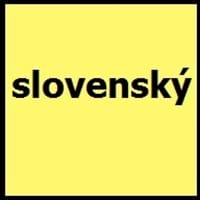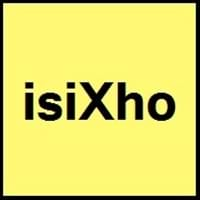Slovak and Xhosa
Countries
Czech Republic, European Union, Serbia, Slovakia
South Africa
National Language
Slovakia, Vojvodina, Serbia
South Africa
Second Language
Not spoken in any of the countries
Lesotho, South Africa
Speaking Continents
Europe
Africa
Minority Language
Czech Republic, Hungary, Russia, Ukraine
Botswana, Lesotho
Regulated By
Ministry of Culture of the Slovak Republic
Not Available
Interesting Facts
- Slovak language was written using Glagolitic Alphabets,in 1843.
- Until the end of 18th century, Slovak did not exist as written language.
- Xhosa has 15 click sounds, borrowed from the khoi-khoi and san languages of the South Africa.
- The same sequence of consonants and vowels can have different meaning when said with different tones, so Xhosa is tonal.
Similar To
Czech Language
Zulu, Swazi, and Ndebele
Derived From
Czech-Slovak Language
Khoi-Khoi and San Languages
Alphabets in
Slovak-Alphabets.jpg#200
Xhosa-Alphabets.jpg#200
Writing Direction
Left-To-Right, Horizontal
Not Available
Thank You
Ďakujem vám
Ndiyabulela
How Are You?
Ako sa máte?
Unjani
Good Night
Dobrú noc
Ulale kakuhle
Good Evening
Dobrý večer
Ubusuku obuhle
Good Afternoon
Dobré popoludnie
Uben' emva kwemini entle
Good Morning
Dobré ráno
Molo
Sorry
Pardón!
Ndicela uxolo
Bye
Dovidenia
Uhambe/Usale kakuhle
I Love You
Ľúbim Ťa
Ndiyakuthanda
Excuse Me
Prepáčte!
Uxolo
Dialect 1
Eastern Slovak
Gcaleka
Where They Speak
Abov, Saris, Spis, Zemplin
South Africa
Dialect 2
Central Slovak
Thembu
Where They Speak
Gemer, Hont, Liptov, Novohrad, Orava, Tekov, Turiec
South Africa
Dialect 3
Western Slovak
Hlubi
Where They Speak
Kysuce, Nitra, Trencin, Trnava, Zahorie
South Africa
Speaking Population
Not Available
Second Language Speakers
Not Available
Native Name
slovenčina
isiXhosa
Alternative Names
Slovakian, Slovencina
“Cauzuh” (pej.), Isixhosa, Koosa, Xosa
French Name
slovaque
xhosa
German Name
Slowakisch
Xhosa-Sprache
Pronunciation
Not Available
Not Available
Ethnicity
Slovaks
amaXhosa, amaBhaca
Origin
6th Century
16th Century
Language Family
Indo-European Family
Niger-Congo Family
Subgroup
Slavic
Benue-Congo
Early Forms
Proto-Slavic
No early forms
Standard Forms
Slovak
isiXhosa
Signed Forms
Not Available
Signed Xhosa
Scope
Individual
Individual
ISO 639 6
Not Available
Not Available
Glottocode
slov1269
xhos1239
Linguasphere
53-AAA-db
99-AUT-fa
Language Type
Living
Living
Language Linguistic Typology
Subject-Verb-Object
Subject-Verb-Object
Language Morphological Typology
Synthetic
Not Available
All Slovak and Xhosa Dialects
Most languages have dialects where each dialect differ from other dialect with respect to grammar and vocabulary. Here you will get to know all Slovak and Xhosa dialects. Various dialects of Slovak and Xhosa language differ in their pronunciations and words. Dialects of Slovak are spoken in different Slovak Speaking Countries whereas Xhosa Dialects are spoken in different Xhosa speaking countries. Also the number of people speaking Slovak vs Xhosa Dialects varies from few thousands to many millions. Some of the Slovak dialects include: Eastern Slovak, Central Slovak. Xhosa dialects include: Gcaleka , Thembu. Also learn about dialects in South American Languages and North American Languages.
Slovak and Xhosa Speaking population
Slovak and Xhosa speaking population is one of the factors based on which Slovak and Xhosa languages can be compared. The total count of Slovak and Xhosa Speaking population in percentage is also given. The percentage of people speaking Slovak language is Not Available whereas the percentage of people speaking Xhosa language is 0.11 %. When we compare the speaking population of any two languages we get to know which of two languages is more popular. Find more details about how many people speak Slovak and Xhosa on Slovak vs Xhosa where you will get native speakers, speaking population in percentage and native names.
Slovak and Xhosa Language Codes
Slovak and Xhosa language codes are used in those applications where using language names are tedious. Slovak and Xhosa Language Codes include all the international language codes, glottocodes and linguasphere.





